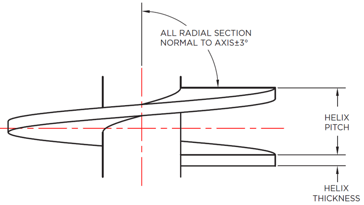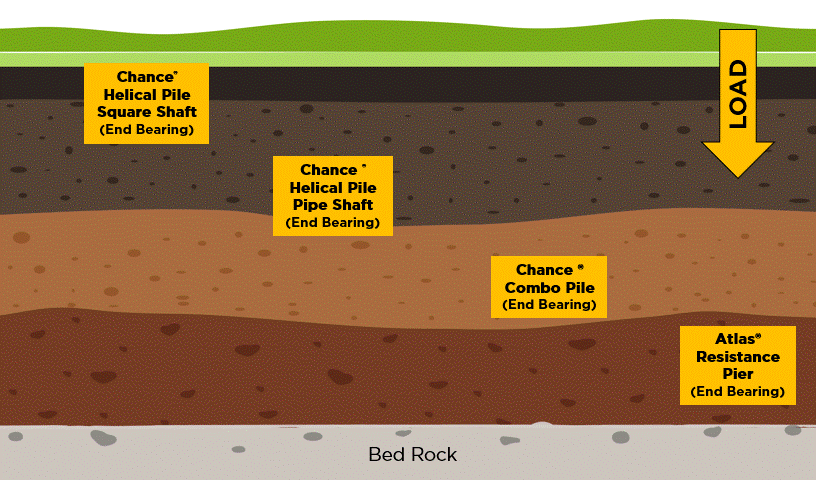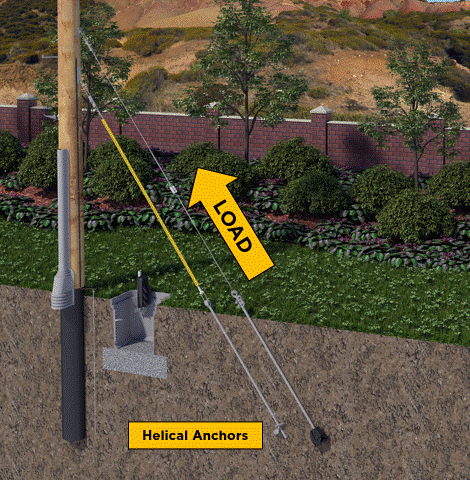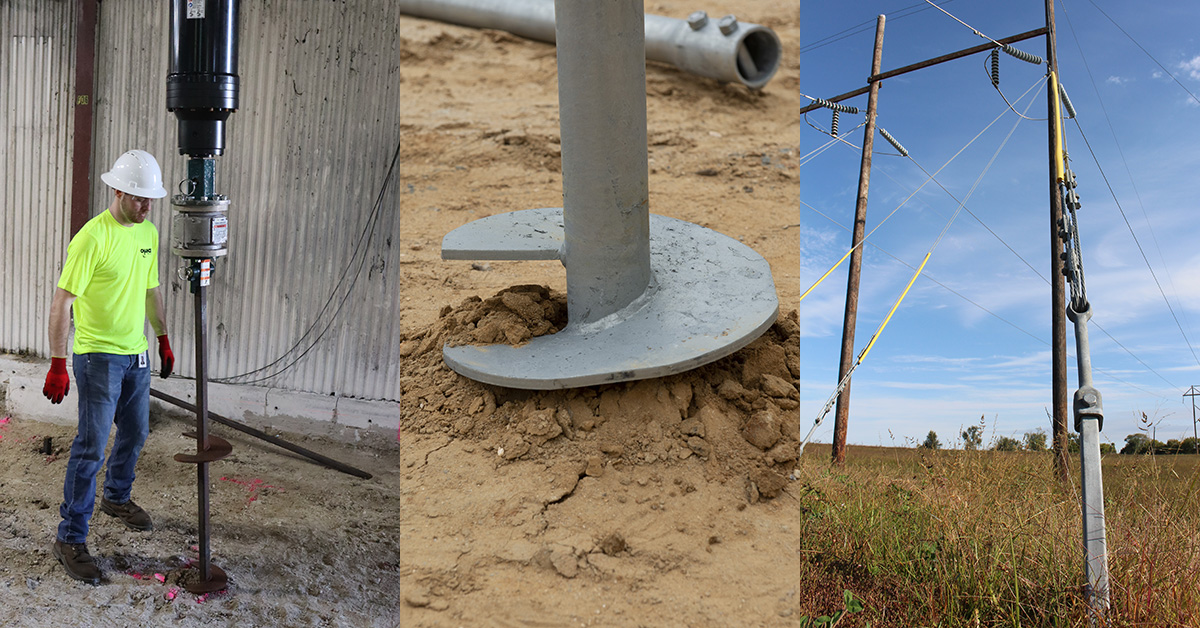Sometimes used interchangeably, helical foundations are known by many names. Some common names include:
-
-
-
Helical Piles
-
Screw-Anchors
-
Screw-Piers
-
Soil-Screws
-
Screw-Cylinders
-
Helical Piers
-
Earth Anchors
-
Ground Screws
Although the myriad of terms can be confusing, the most important thing to remember is that they all consist of a central shaft with one or more helical plates attached to the shaft. Some more recent configurations of “Ground Screws” have a continuous threaded section along the shaft. This is very different than helical piles or anchors having individual plate helices.
The purpose of the helix is to allow rotation into the soil much like a screw into a piece of wood. Not all helical products are equal! It is crucial for the helix to be engineered and manufactured to minimize soil disturbance during installation. When designed properly, the helix maximizes the load capacity of the pile.

The term helical pile is generally used when a helical foundation is used to support axial compression loads, such as from a building or a bridge. Chance helical piles are available both with a solid steel square shaft or a round pipe shaft, or a combination of both.
-
-
-
Square shaft (SS) – when compared to other types of helical piles, square shaft helical piles can support the most axial capacity with the least amount of torque because of their greater torque correlation factor (Kt) compared to larger displacement helical piles. The higher torque efficiency makes square shaft piles the lowest cost per kip at load ranges of 50 kip or less.
-
Round Shaft (RS) – less susceptible to buckling, provide greater lateral capacity, and greater moment capacity, than type SS material.
-
Combo Pile – by leading with square shaft and then transitioning to round shaft, you can realize the superior installation of SS in dense soils, followed by the RS which will prevent buckling and add lateral capacity.

The term helical anchor is generally used when a helical foundation is used to support tension loads such as uplift loads from wind or tension loads for a guyed structure, such as a high voltage electrical transmission tower or a cell phone tower or when used as soil anchors for a temporary or permanent retaining wall. Think of an anchor like one used for a ship – the boat above is being moved by weather and waves and thus is pulling on the anchor. Our helical anchors are used in marine applications too, but without damage to underwater ecosystems – read more about it here!

Sometimes differentiating between piles and anchors can be confusing, especially in situations when the foundation is being used to provide support for a combination of loads, compression, tension and maybe even lateral.
A pier is a solid support designed to sustain axial compression load. Therefore, when you take a steel shaft and add helices to it you have a helical pier – the same as a helical pile. Piers tend to be shorter depth and larger in section than piles, which tend to be longer depth.
Chance resistance piers do not have helices. They consist of a steel pipe shaft that requires the resistance of a compression load to be installed. Applying an opposite load (like a home’s foundation), allows the pier to be pushed into the ground, transferring the load of the structure into the resistance pier shaft. Therefore, they are also known as push piers. Read more about them here.
We’ve been doing piers, piles, and anchors for a long time – A.B. Chance invented the first practical earth anchor in 1907! Get in touch with our team and we would be glad to help answer your questions, provide a quote, engineering assistance, and more!

